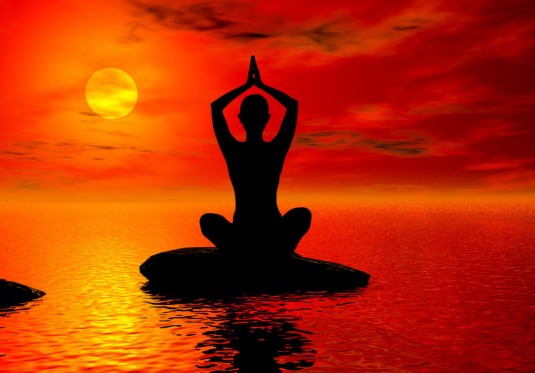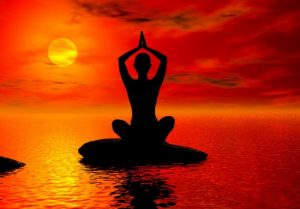YOGA: THE PANACEA FOR MANY ILLS
The great wealth of knowledge available within the ancient Vedic literature of India is indeed secretive, though not meant to be so. Let us explore Yoga that is of great relevance today. The Bhagavad Gita describes it as “skill in actions.” The Upanishad says: “It is said to be the oneness of breath, mind and senses”. Various troublesome factors like pollution and the changing lifestyles plague the modern world. Man is confronted by many ailments like strain, anxiety and hypertension that disrupt his normal life. Yoga is a system of exercises for both physical and mental upkeep. Apart from being a system of exercise, Yoga also inculcates self-discipline.
It was as early as the 2nd century B.C. that the fundamentals of Yoga were systematically presented. The person who is credited with having done this is Patanjali. According to Patanjali, within the human body there are channels called Nadi-s and centers called Chakra-s. If these are tapped, the hidden energy can be released. Though Yoga has been practised for countless generations, it is only during the last few years that scientists have begun to recognize its powers. Tests conducted on Yogis reveal that they do acquire extraordinary powers. For instance, they can survive without oxygen and remain without food for long periods.
Yoga was an integral part of the traditional education as imparted in Ashrama¬s and Gurukula-s. Though education in these Ashrama-s was open only to a few, the practice of Yoga, in its less strict versions, has been popular among the common people all through the ages. The field where the application of Yoga is being increasingly recognized is Physiotherapy. Yoga has also been used to treat disorders such as asthma, backache, depression, etc. and is being assessed for its potential in treating illnesses such as multiple sclerosis, osteoporosis, cerebral palsy, etc. Such is the amazing power of Yoga!
AYURVEDA: THE MEDICAL SCIENCE OF INDIA’S HOARY PAST
Ayurveda – The Science of Longevity
Ayurveda is an indigenous system of medicine in India. It has its root in ancient Vedic literature and encompasses our entire being. Ayurveda is a Sanskrit word – Ayur means life, and Veda, knowledge.
Charaka’s pioneering work
According to Charaka, a noted practitioner of Ayurveda in ancient India: “If a physician fails to enter the body of a patient with knowledge and understanding, he can never treat diseases.” The main quality, which Ayurveda has borrowed from Charaka, is its aim of removing the cause for illness.
The history of Ayurveda
We can find historical evidence of Ayurveda in the ancient books of wisdom known as the Vedas. In the Rig Veda, over sixty medicinal preparations were mentioned. Ayurveda grew into a respected and use system system of healing in India. Around 1500 B.C., Ayurveda was divided into eight branches of medicine. Learned men from China, Tibet, Greece, Rome, Egypt, Afghanistan and Persia, travelled to learn the complete science and take it back to their own countries . Ayurvedic texts were translated into Arabic.
Practitioner of Ayurveda worships Lord Dhanvantari as God of Medicine. Please check the below link for more details on Dhavantari and Ayurveda. http://anudinam.org/2012/01/31/dhanvantari-the-hindu-god-of-medicine/










SamvednaTrust is a charitable trust committed to work for the betterment of people (specially children) suffering from various kind of disability.
Thanks & Regards:-
Cerebral Palsy Children